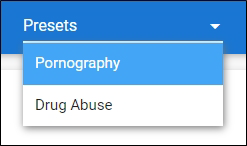Analytics
The Web Analytics screen gives you valuable information about the following:
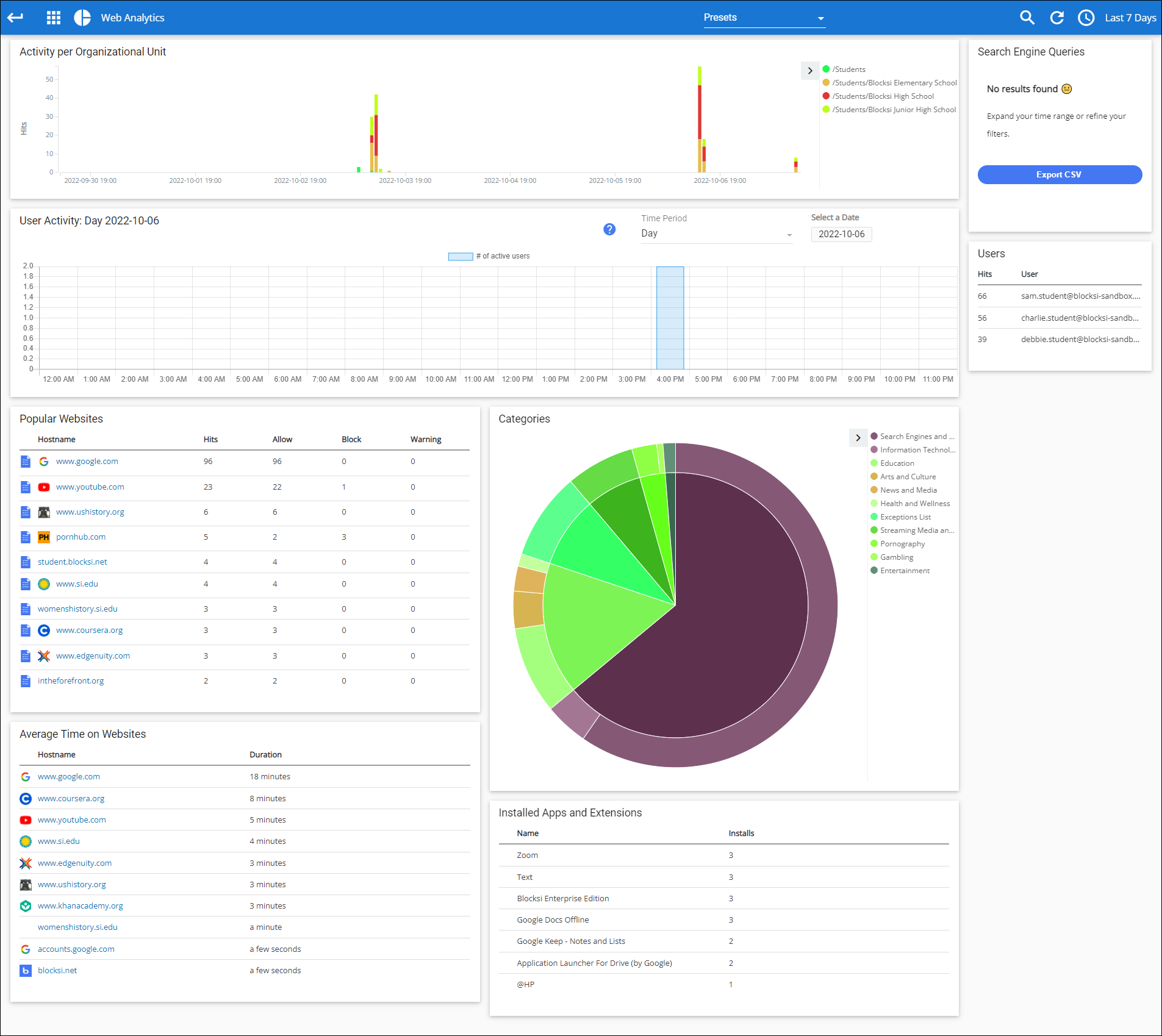
Activity per Organizational unit - Shows the amount of activity for each organizational unit (OU) in the district. The data are arranged in the chart according to the timeframe selected on the Web Analytics screen. Each color represents one OU. Hover over each bar on the chart to see the OU, the date and time at which the data was pulled, and the number of requests. Click one of the bars to change the data on the screen to that specific OU. See Filtering Analytics for more information.
User Activity - Displays the number of active users per day, week, or month, or for a specific date.
Popular Websites - Displays the number of times the most popular websites were visited, including whether they were allowed, blocked, or provided a warning. Click each website name to go to that website. Click the blue document icon to the left of the website name to add the URL to the exception list.
Average Time on Websites - Provides the average time spent on each of the included websites. Click each website name to go to that website.
Categories - Uses a pie chart to show the categories of the websites visited during the selected timeframe. Hover your mouse cursor over each color to see the website category and the percentage of the overall category usage. Click each category to see the websites for that category. See Filtering Analytics for more information.
Installed Apps and Extensions - Displays the names of applications and extensions installed on users’ accounts.
Search engine queries - Shows the terms used to search for a website and the number of times each was searched for. Click each term to see which websites it was searched on. See Filtering Analytics for more information. Download all search engines queries performed during the currently selected timeframe in CSV format. See Downloading Search Engine Queries for more information.
Users (students) - Shows the students included in the selected timeframe and the number of hits each has. Click each user’s name to see the analytics for only that student. See Filtering Analytics for more information.
The YouTube Analytics screen gives you valuable information about the following:
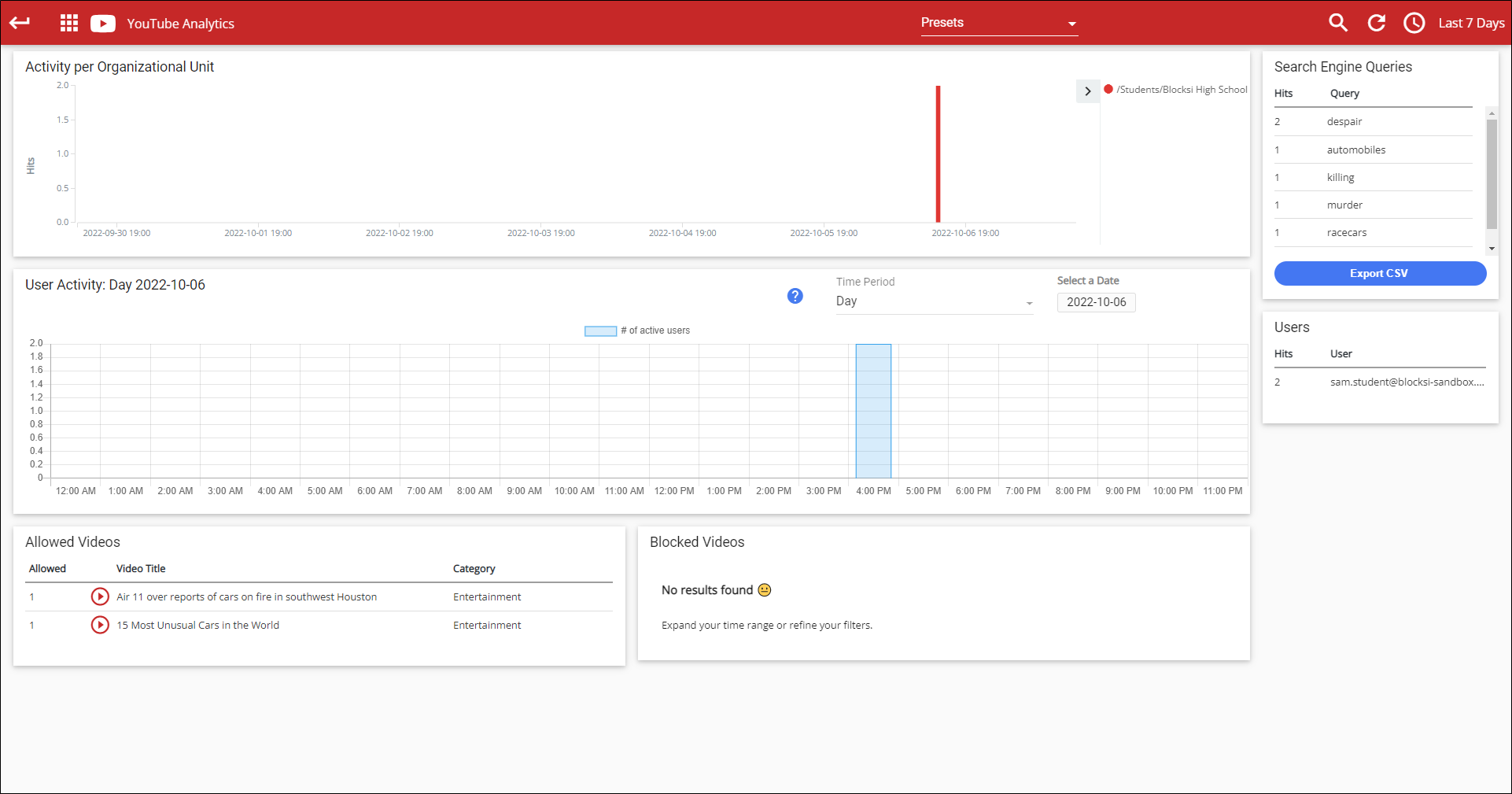
Activity per Organizational unit - Shows the amount of activity for each organizational unit (OU) in the district. The data are arranged in the chart according to the timeframe selected on the YouTube Analytics screen. Hover over each bar on the chart to see the OU, the date and time at which the data was pulled, and the number of requests. Clicking one of the bars changes the data on the screen to that specific OU. See Filtering Analytics for more information.
User Activity - Displays the number of active users per day, week, or month.
Allowed Videos - Displays the names of the videos allowed during the selected timeframe.
Blocked Videos - Displays the names of the videos blocked during the selected timeframe.
Search engine queries - Shows the terms used to search for website and the number of times each was searched for. Click each term to see which websites it was searched on. See Filtering Web Analytics for more information.
Users (students) - Shows the students included in the selected timeframe and the number of hits each has. Click each user’s name to see the analytics for only that student. See Filtering Analytics for more information.

The DNS analytics screen gives you valuable information about the following:
Public IP Activity - Shows activity from that specific IP. Some districts have multiple DNS IPs. See Filtering Analytics for more information.
Popular Websites - Gives the number of times the most popular websites were visited, including whether they were allowed, blocked, or provided a warning. Click each website name to go to that website. Click the blue document icon to the left of the website name to add the URL to the exception list.
DNS Categories - Uses a pie chart to show the categories of the websites filtered by DNS visited during the selected timeframe. Hover your mouse cursor over each color to see the website category and the percentage of the overall category usage. Click each category to see the websites for that category. See Filtering Analytics for more information.
Select the timeframe for which the web analytics apply.
To select the timeframe
Click Insights from the Main Menu and then click Web Analytics from its sub-menu. The Web Analytics screen appears. The timeframe is located at the far right of the blue area at the top of the screen. The default timeframe is Last 24 hours.
Click the timeframe to change it. The blue area expands to include a range of various timeframes, as shown below. The Quick section includes preset timeframes. Click the Calendar section to choose the timeframe by month, week, and year, as shown to the right.


Click a timeframe to select it or select one from the calendar and click GO. The new timeframe appears at the far right of the blue area.
Create as many search filters as you need and use them to view specific analytics.
To access the filter
Click Insights from the Main Menu.
Click the search icon at the top of the screen. The filter appears.
The following filters are available:
User - Search for a specific user’s browsing activity | Class - Search for a specific class |
Organizational unit - Search for a specific organizational unit | Teacher - Search for a specific teacher |
Action - Values supported are Allow, Block, and Warning | Location - Search for a specific location |
Category - Search for a specific web category | Policy - Search for a specific policy |
Hostname - Search for a specific hostname | WAN IP - Search for a specific WAN IP address |
Path - Search for a specific path | LAN IP - Search for a specific LAN IP address |
Search Engine Queries - Search for specific search terms |
Note
You can use only one instance of each of these filters.
To use the filter
Select the filter to search on from the Filter drop-down list. When you select an option, the Name field and the Wildcard checkbox appear beneath the Filter list, as shown below.
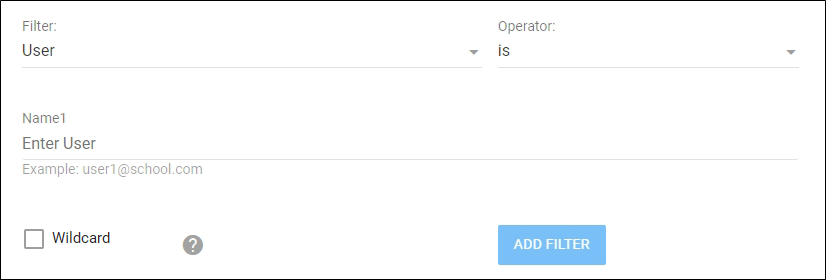
Note
The Wildcard checkbox appears only when you select any filter other than Action, Category, or Location.
Note
Blocksi uses the asterisk (*) as a wildcard to represent one or more unknown characters in a URL. Example: "www.google.*" matches "www.google.com" and "www.google.co.uk".
Select the operator from the Operator drop-down list. The operator is used to restrict the search to a particular value. For instance: if you select User in the Filter list, is not in the Operator list, and type student002 in the Name field, the filter restricts the search results to all students other than student002.
Note
If you select Action, Category, or Location as the filter and is one of or is not one of as the operator, checkboxes appear to the right of each filter when you place your cursor in the Name field.
Type the item to search for in the Name field.
Select the Wildcard checkbox if you include wildcards in your search. Selecting the checkbox is required if you use wildcards in your search.
Tip
The filter appears in red if you select is not or is not one of operators; otherwise, the filter appears in green.
When you save a filter, it is saved as a preset filter. If you plan to search with same filter often, it is best to create a preset so you don’t have to select the filter each time. Saved filters are also used in reporting.
Create a filter for Pornography. After you create the filter, it appears on the Web Analytics screen along with two buttons, as shown below.

To save the filter
Click the SAVE FILTERS button to save this filter as a preset filter. The following window opens.
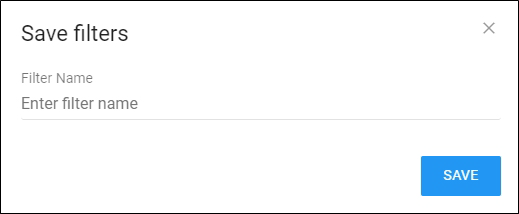
Type the name of the filter in the Filter Name text box and click the SAVE button.
To remove the filter
Click the REMOVE FILTERS button to remove this filter. This action does not delete the preset filter if you created one using this filter.
When you remove a preset filter, it is removed completely from the system.
When you select a preset filter from the drop-down list, a trash can icon appears to the right of the preset filter, as shown below.

To remove a preset filter
Click the trash can icon to remove the preset filter from the system.
Download the analytics report, which contains information about Web and YouTube analytics, in CSV or PDF format.
To download the analytics report
Click Insights from the Main Menu and then click Web Analytics from its sub-menu. The Web Analytics screen appears.
Click Web Analytics at the top of the screen. A menu appears beneath the title bar.
Do one of the following:
Click DOWNLOAD PDF. The file appears in the lower left-hand corner of your screen in PDF format. Click it to open and save it.
Click LOGS. The Recent Logs screen appears. Click EXPORT CSV in the upper right-hand corner of the screen. The Export CSV window opens.
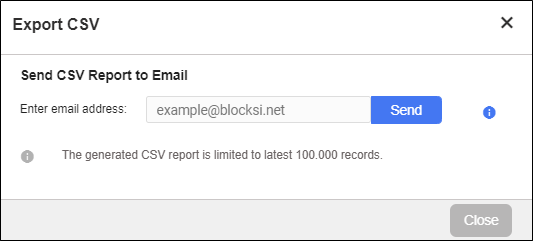
Type the email address in the text box and click Send. The CSV report is generated and sent to the email address you entered.
Download search engine queries in CSV format to keep for your records.
To download search engine queries
Click Insights from the Main Menu and then click Web Analytics from its sub-menu. The Web Analytics screen appears.

Click the Export CSV button in the Search Engine Queries section. The file appears in the lower left-hand corner of your screen in your spreadsheet program. Click it to open and save it.
